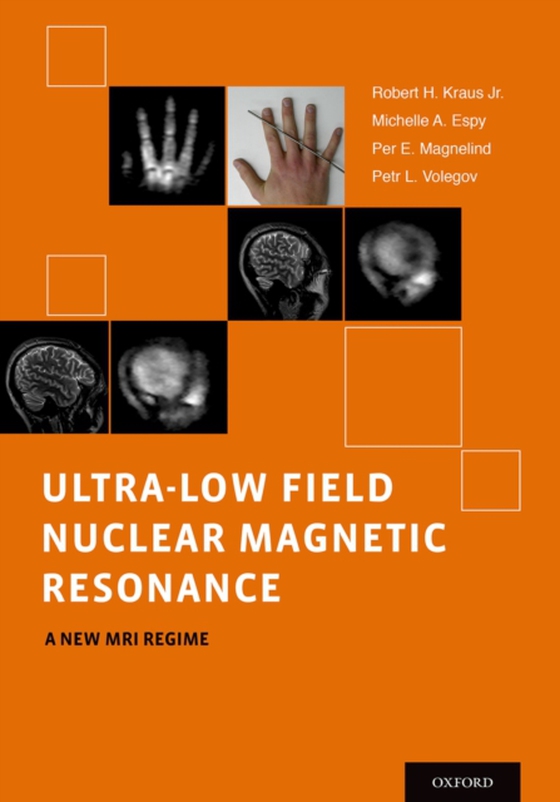
Ultra-Low Field Nuclear Magnetic Resonance e-bog
1386,89 DKK
(inkl. moms 1733,61 DKK)
This book is designed to introduce the reader to the field of NMR/MRI at very low magnetic fields, from milli-Tesla to micro-Tesla, the ultra-low field (ULF) regime. The book is focused on applications to imaging the human brain, and hardware methods primarily based upon pre-polarization methods and SQUID-based detection. The goal of the text is to provide insight and tools for the reader to b...
E-bog
1386,89 DKK
Forlag
Oxford University Press
Udgivet
26 februar 2014
Længde
416 sider
Genrer
MMPG
Sprog
English
Format
pdf
Beskyttelse
LCP
ISBN
9780199796519
This book is designed to introduce the reader to the field of NMR/MRI at very low magnetic fields, from milli-Tesla to micro-Tesla, the ultra-low field (ULF) regime. The book is focused on applications to imaging the human brain, and hardware methods primarily based upon pre-polarization methods and SQUID-based detection. The goal of the text is to provide insight and tools for the reader to better understand what applications are best served by ULF NMR/MRI approaches. A discussion of the hardware challenges, such as shielding, operation of SQUID sensors in a dynamic field environment, and pulsed magnetic field generation are presented. One goal of the text is to provide the reader a framework of understanding the approaches to estimation and mitigation of low signal-to-noise and long imaging time, which are the main challenges. Special attention is paid to the combination of MEG and ULF MRI, and the benefits and challenges presented by trying to accomplish both with the same hardware. The book discusses the origin of unique relaxation contrast at ULF, and special considerations for image artifacts and how to correct them (i.e. concomitant gradients, ghost artifacts). A general discussion of MRI, with special consideration to the challenges of imaging at ULF and unique opportunities in pulse sequences, is presented. The book also presents an overview of some of the primary applications of ULF NMR/MRI being pursued.
 Dansk
Dansk

